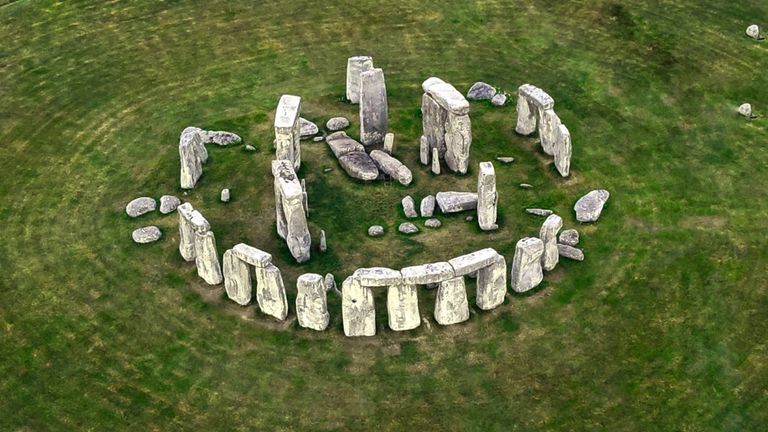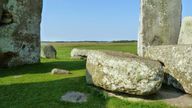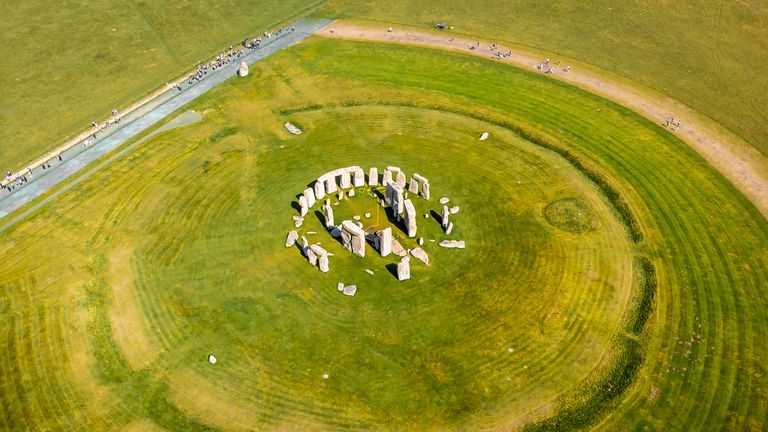Stonehenge mystery 'solved' - here's why the monument was made
Researchers say the site was created based on a solar year of 365.25 days to help people keep track of days, weeks and months.
Wednesday 2 March 2022 06:55, UK
The mystery of Stonehenge may finally have been unravelled by researchers who say it's a giant solar calendar that may link the UK to ancient Egypt.
Professor Timothy Darvill, from Bournemouth University, concluded that the site was created based on a solar year of 365.25 days to help people keep track of days, weeks and months.
Weeks were ten days long and there were more months than we are used to today.
"Such a solar calendar was developed in the eastern Mediterranean in the centuries after 3000 BC and was adopted in Egypt as the Civil Calendar around 2700 BC and was widely used at the start of the Old Kingdom about 2600 BC," he said.
It is possible that the calendar tracked by Stonehenge was influenced by one of these cultures.
The Stonehenge site is aligned in the direction of the sunrise of the summer solstice and the sunset of the winter solstice, which has long prompted people to suggest that it is some kind of calendar, Prof Darvill said.
The outermost setting of Stonehenge - a circle of 30 upright sarsen stones - was constructed at around 2,500 BC.
Prof Darvill built on this knowledge by analysing the stones and comparing them to other calendars from this period.
"The proposed calendar works in a very straightforward way," he said.
"Each of the 30 stones in the sarsen circle represents a day within a month, itself divided into three weeks each of 10 days."
The distinctive stones in the circle mark the start of each week and the design also reflects a leap day every four years - marked by the four station stones outside the sarsen circle, of which there are now only two that remain.
A five-day month was inserted in the calendar to harmonise it with the solar year - represented by the five trilithons in the centre of the site.
A trilithon is a structure consisting of two large vertical stones supporting a third stone set horizontally across the top.
The calendar's alignment with the sun means that any errors in counting the days would be easily noticed as the sun would be in the wrong place during the summer and winter solstices.





